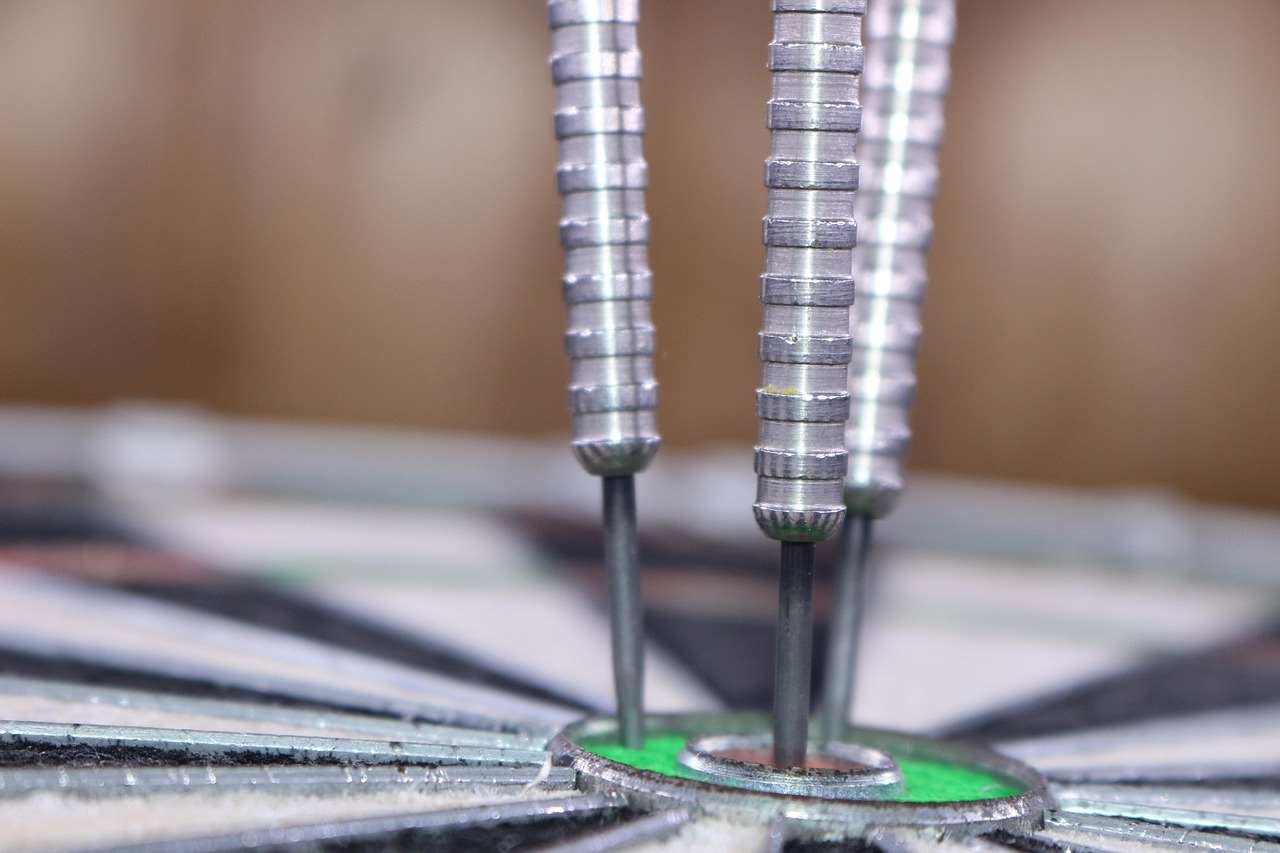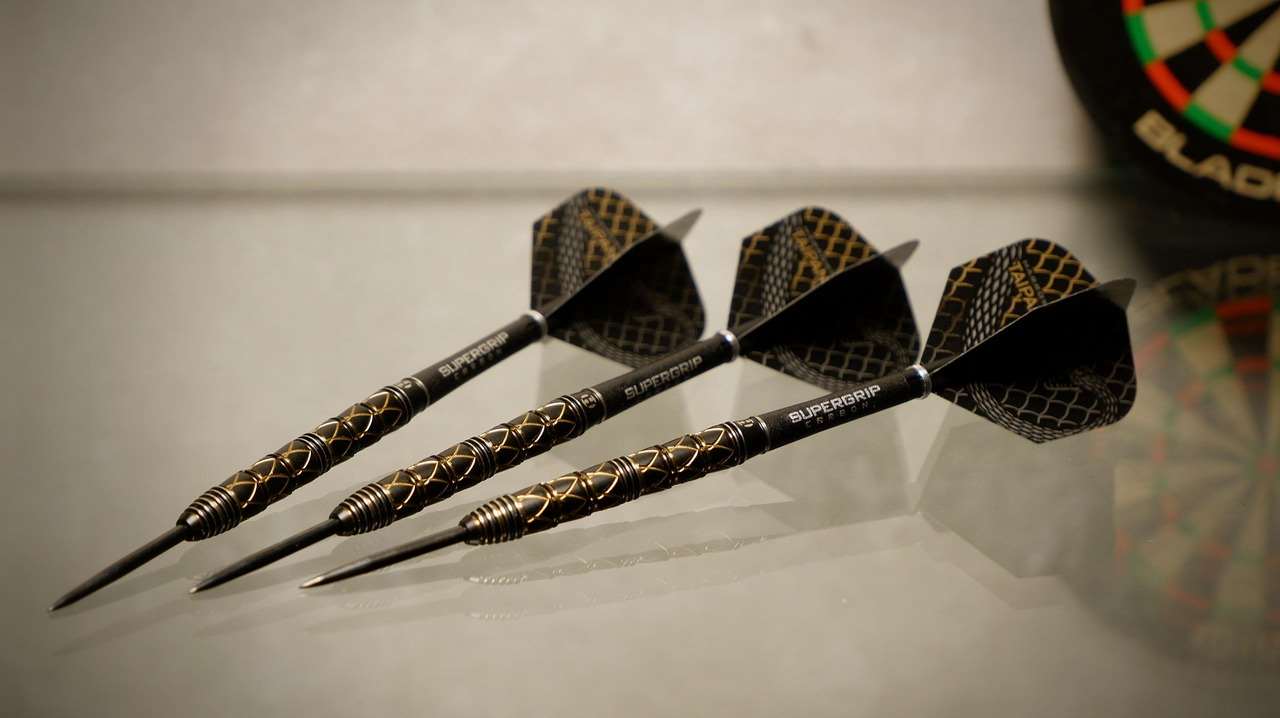Looking to level the playing field in your golf darts game? This article dives into various golf darts handicap system ideas, offering solutions to ensure fair and competitive matches regardless of skill level. We’ll explore practical methods, from simple percentage-based adjustments to more complex, tiered handicapping approaches, so you can find the perfect system for your group.
⚠️ Still Using Pen & Paper (or a Chalkboard)?! ⚠️
Step into the future! The Dart Counter App handles all the scoring, suggests checkouts, and tracks your stats automatically. It's easier than you think!
Try the Smart Dart Counter App FREE!Ready for an upgrade? Click above!
Understanding the Need for a Golf Darts Handicap System
The beauty of golf darts lies in its accessibility, but without a proper handicap system, experienced players can easily dominate beginners. This can lead to frustration and discourage less skilled participants. A well-designed golf darts handicap system aims to mitigate this disparity, providing a more engaging and enjoyable experience for everyone involved. This ensures that wins are earned, not simply guaranteed, and that even newcomers have a realistic chance of competing.
Ultimately, the goal of any handicapping method is to create a level of competition where players of varying abilities can compete fairly. This not only encourages participation but also fosters a sense of camaraderie and friendly rivalry. By implementing a thoughtful and balanced handicap system, you transform golf darts from a potentially one-sided affair into a genuinely enjoyable and competitive game for all.

Exploring Different Golf Darts Handicap System Ideas
There are several approaches to creating a golf darts handicap system, each with its own strengths and weaknesses. The best option will depend on the specific needs of your group, including the range of skill levels, the desired level of complexity, and the frequency of play. Let’s examine some popular options:
Percentage-Based Handicapping
This is a relatively simple method that involves calculating a player’s average score and then applying a percentage reduction to their score. For example, if a player averages 60 darts per round, and the handicap percentage is 20%, their adjusted score would be 48 darts. This system is easy to understand and implement, making it a good choice for casual play. You can learn more about different darts game variations as well.
However, percentage-based handicapping can sometimes be less accurate than other methods, particularly when there is a wide disparity in skill levels. Players with very high averages may not receive enough of a handicap, while those with very low averages may be over-handicapped.
Tiered Handicapping
Tiered handicapping involves dividing players into different skill levels or tiers based on their average scores. Each tier is then assigned a specific handicap adjustment. For example:
- Tier 1 (Average Score < 50): -15 darts
- Tier 2 (Average Score 51-65): -10 darts
- Tier 3 (Average Score 66-80): -5 darts
- Tier 4 (Average Score > 80): No handicap
This system is more complex than percentage-based handicapping but can provide a more accurate and balanced playing field. It allows for more granular adjustments based on specific skill levels. Implementing a tiered handicap system can increase competitiveness and engagement among players.
The “Bogey” System
In this system, each player is assigned a “bogey” score for each hole (typically the par plus a few darts). If a player takes more darts than their bogey, they simply record their bogey score for that hole. This method is similar to the handicap system used in golf and can be particularly effective in preventing blow-up holes from significantly impacting a player’s overall score.
The “bogey” system is relatively easy to understand and implement, and it can help to keep games competitive even when there are significant skill differences between players. It also encourages strategic play, as players must consider the risk versus reward of attempting difficult shots.
Individual Hole Handicapping
This method involves assigning a handicap to each individual hole based on its difficulty. For example, the most difficult hole might have a handicap of -3 darts, while the easiest hole might have no handicap. Players then receive their assigned handicap on each hole, adjusting their score accordingly. This approach adds a layer of strategic depth, as players must consider which holes offer the best opportunity to gain an advantage.

Factors to Consider When Choosing a Golf Darts Handicap System
Selecting the right golf darts handicap system requires careful consideration of several key factors. The most important factors include the skill level of the players, the desired level of complexity, the frequency of play, and the overall goal of the game.
Skill Level of Players
The range of skill levels within your group is a primary determinant. If there’s a wide gap between the best and worst players, a more sophisticated system like tiered handicapping or individual hole handicapping may be necessary to ensure fair competition. If the skill levels are relatively close, a simpler percentage-based system might suffice.
Desired Level of Complexity
Consider how much time and effort you’re willing to invest in calculating and managing the handicap system. Simpler systems are easier to implement and maintain, but they may not be as accurate. More complex systems require more effort but can provide a more balanced playing field. Finding the right balance between simplicity and accuracy is crucial. We also recommend exploring English Cricket darts rules if you’re interested in other variations of dart games.
Frequency of Play
If you play golf darts frequently, it may be worth investing in a more sophisticated handicap system that provides more accurate and consistent results. If you only play occasionally, a simpler system might be more appropriate.
Overall Goal of the Game
Are you primarily focused on having fun, or are you looking for a highly competitive experience? If your goal is simply to have fun, a simpler handicap system that is easy to understand and implement may be the best choice. If you are looking for a more competitive experience, you may want to consider a more sophisticated system that provides a more balanced playing field.

Practical Tips for Implementing Your Chosen Handicap System
Once you’ve chosen a golf darts handicap system, it’s important to implement it effectively to ensure fairness and enjoyment for all players. Here are some practical tips to help you get started:
Track Scores Accurately
Accurate scorekeeping is essential for any handicap system. Use a reliable method for recording scores, such as a scorecard or a dedicated app. Ensure that all players understand the scoring rules and are honest in their reporting. Regular review of scorecards can help identify any inconsistencies or potential errors.
Regularly Review and Adjust Handicaps
Handicaps should be reviewed and adjusted regularly based on player performance. This ensures that the handicaps remain accurate and reflect the current skill levels of the players. Consider adjusting handicaps after each game or after a set number of rounds.
Be Transparent and Consistent
Communicate the handicap system clearly to all players and be consistent in its application. This helps to build trust and ensures that everyone understands the rules of the game. Address any questions or concerns promptly and fairly. Transparency and consistency are key to maintaining a positive and enjoyable playing environment.
Encourage Sportsmanship
Even with a well-designed handicap system, sportsmanship is essential for creating a positive and enjoyable playing environment. Encourage players to be respectful of each other and to celebrate good shots, regardless of skill level. Remember that the goal of the game is to have fun, not just to win.

Advanced Handicap Adjustments and Considerations
Beyond the basic systems, several advanced adjustments can fine-tune your golf darts handicap system for even greater accuracy and fairness. These considerations often involve incorporating factors beyond simple averages and scores.
Course Difficulty Adjustment
Just as in golf, the “course” (in this case, the dartboard setup or throwing distance) can impact scores. Consider subtly adjusting handicaps based on perceived differences in difficulty. A slightly longer throwing distance, or a dartboard with worn segments, could warrant a minor adjustment.
Performance Trend Consideration
Instead of relying solely on overall averages, consider incorporating recent performance trends. If a player has been consistently improving, their handicap might not accurately reflect their current skill level. Adjustments can be made based on a moving average of their last few games, giving more weight to recent performances.
“Sandbagging” Prevention
“Sandbagging,” where a player intentionally performs poorly to inflate their handicap, is a common concern in handicap systems. Monitor player performance and be prepared to adjust handicaps if there is evidence of intentional manipulation. Open communication and a clear understanding of the rules can also help deter sandbagging.

The Future of Golf Darts Handicapping
Technology is poised to play an increasingly significant role in the future of golf darts handicap system ideas. Apps and software can automate score tracking, handicap calculations, and even provide real-time adjustments based on player performance. This can make handicap systems more accessible and easier to manage, leading to a more enjoyable and competitive experience for all players. The use of artificial intelligence could even personalize handicaps based on individual player tendencies and preferences.
Conclusion
Choosing the right golf darts handicap system is crucial for creating a fair and enjoyable game for players of all skill levels. From simple percentage-based adjustments to more complex tiered systems, there’s a solution to fit every group’s needs. Remember to consider the skill levels of the players, the desired level of complexity, and the overall goal of the game when making your decision. By implementing a well-designed and consistently applied handicap system, you can transform golf darts into a genuinely competitive and engaging experience for everyone. Experiment with different handicap methods, track your results and create a system that maximizes the fun of the game!
Now that you have a better understanding of golf darts handicap system ideas, why not put one into practice? Gather your friends, choose a system that fits your needs, and start enjoying a more competitive and balanced game of golf darts! Good luck, and happy throwing!
Hi, I’m Dieter, and I created Dartcounter (Dartcounterapp.com). My motivation wasn’t being a darts expert – quite the opposite! When I first started playing, I loved the game but found keeping accurate scores and tracking stats difficult and distracting.
I figured I couldn’t be the only one struggling with this. So, I decided to build a solution: an easy-to-use application that everyone, no matter their experience level, could use to manage scoring effortlessly.
My goal for Dartcounter was simple: let the app handle the numbers – the scoring, the averages, the stats, even checkout suggestions – so players could focus purely on their throw and enjoying the game. It began as a way to solve my own beginner’s problem, and I’m thrilled it has grown into a helpful tool for the wider darts community.